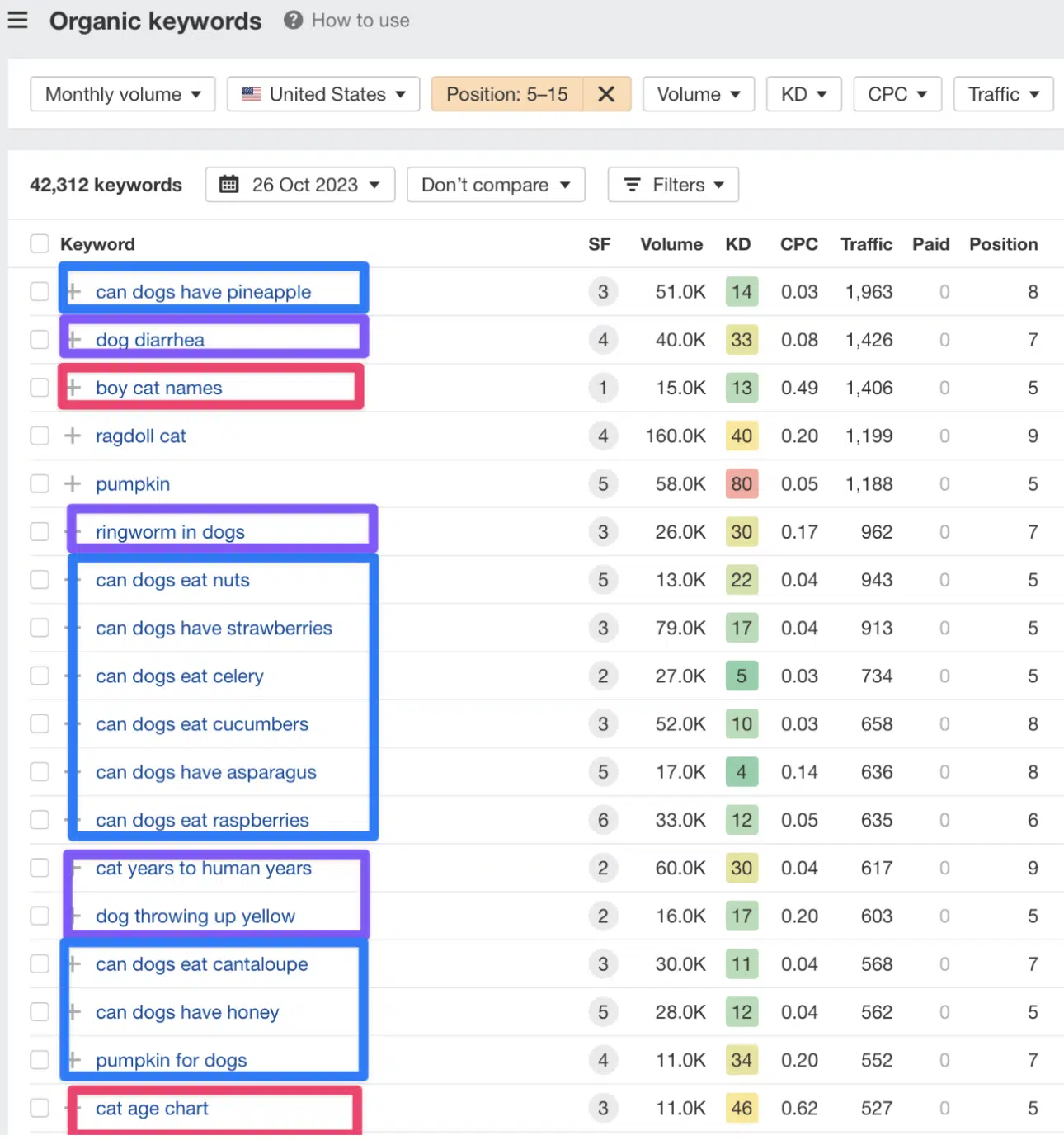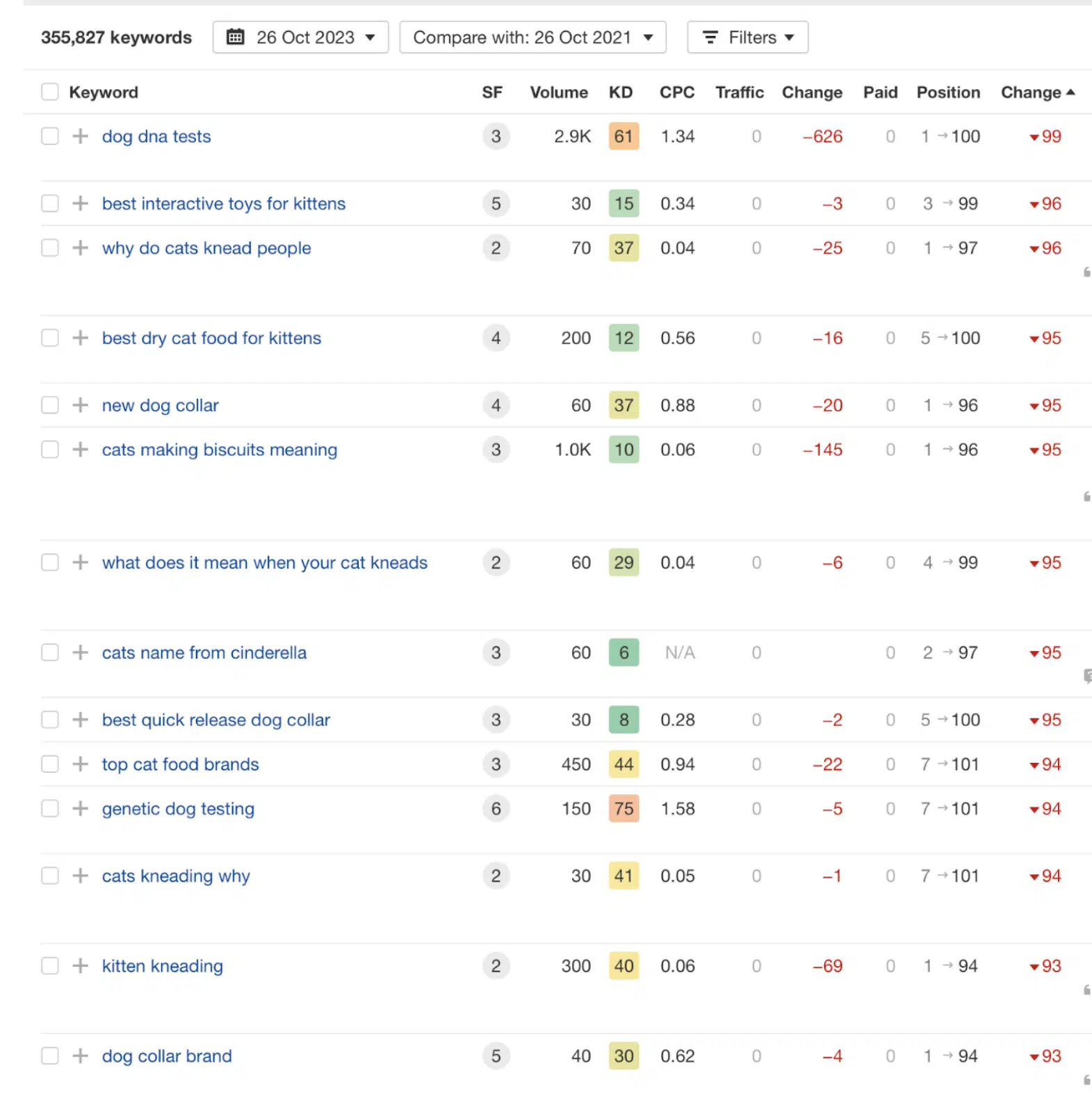3 quick SEO wins to kick-start growth next year
Driving SEO growth takes time, but you can implement these simple but effective tactics in the next 3-6 months to get short-term wins.
The best SEO tactics aren’t high-level, complex theories, but simple, actionable insights.
All the pivot tables in the world won’t save your bacon if you fail to drive results. And results come from outputs, from action, not analysis. So close out those multi-tab spreadsheets and roll up your sleeves.
This short, simple article will help get you back to basics right in time to kick-start growth for next year.
How to drive SEO results in the next six months
SEO is a long-term game. That’s why your results next year will often come from what you’re doing this year. But what if that’s not soon enough, not fast enough or just not enough in general?
If that’s the case, you need to adjust your payback period and the strategies or tactics you pick as a result. With SEO, you front-load an investment over the first few years to create an asset with a defensible moat that appreciates in value over time.
Could you set your sights high, then? Should you dominate the top commercial, money-making term in your space?
Definitely!
There’s only one problem: you’re probably looking at years and millions to make it happen. That won’t help you today, next week or next month.
Instead, try shifting your attention from what you don’t have and don’t rank for, to what you do have and are already ranking for.
Here’s how.
1. Update and re-optimize content ranking outside the top five
The vast majority of ranking content doesn’t get seen, read or clicked.
Only about the top five results on a SERP get roughly 80% of the love. (See nearly every SERP CTR study ever.)
That means two things:
- SERPs (and SEO by extension) are a zero-sum game. To win, others must lose.
- This means you need to win at all costs – prioritizing top five rankings ASAP.
Contrary to popular belief, new content won’t help you much here because will take weeks-to-months-to-years to go from non-indexed to top five.
Instead, start by looking at all existing content ranking in positions five to 15. Throw in a minimum volume floor to focus on the biggest bang for your buck. Then, set a keyword difficulty ceiling to prioritize the “lowest-of-low” hanging fruit.
Voila.

Now you’ve found some easy content pieces to update. More importantly, you’ve identified a few different scalable content ideas where you’re already showing some topical authority to help increase the time to rank new content when you’re ready to triple down on new output.
2. Update and re-optimize content showing keyword cannibalization
You’re already ranking for some keywords. That’s great! But here are the common problems:
- You’re picking up rankings you shouldn’t – where you’re optimizing for one topic and sort of ranking for another, which means…
- You’ll likely never crack into the top five with that piece of content for that keyword because the competition outranking you is properly optimized for said query, which also means…
- You probably already have content you want to rank for that keyword, except it’s ranking potential is being cannibalized by that other existing page on your site.
Here’s an example:

The page in green (“/cat-health-insurance/”) is ranking for “pet insurance for cats.” That’s good! Hence, the green. But look at the terms in yellow. There are four keywords and two pages. That’s not a great sign unless you can prove significant SERP overlap.
The first keyword is branded and blurred. (We can’t share all our secrets.) Yet it’s the homepage (“/”) ranking for a branded keyword, which is fine. However, the same homepage also ranks for top unbranded or non-branded keywords (like “pet insurance” or “dog pet insurance”). That’s bad!
Unless those SERPs are already filled with homepages, which they aren’t, then you have keyword cannibalization screwing with the pages you actually want to show up here.
Right on queue, look at the last one in yellow, the “/dog-health-insurance/” – which is being cannibalized by the homepage. Where there’s smoke, there’s fire.
If this is happening in a case like this, it’s almost certainly happening across many other areas of your site, too. No worries! Here’s all you have to do:
- Re-optimize your homepage to focus on branded terms.
- Update and re-optimize your landing pages for the correct non-branded terms.
- Throw in a canonical link for good measure.
- Update your internal link structure, reinforcing exact match anchor text (without going all 2005 SEO on it).
- Top it all off with some high-quality and relevant, exact-match anchor variation, editorially based links.
This is a super easy, five-step process that can quickly (in about zero to six months) pay dividends.
3. Update and re-optimize content that used to rank well but has lost rankings in the last 1 to 2 years
SERPs are living, breathing things. They’re not static. They always evolve as searchers become more nuanced and information changes over time.
Your competition for these SERPs is also evolving at the same time, upping their game and throwing more money plus talent at the same rankings you used to covet so dearly.
The result?
After a year or so of good rankings, you get complacent. Your attention shifts to other areas. You very quickly will start to slide backward into SERP obscurity.
- This is extremely common, so expect and embrace reality.
- It’s happening all the time, literally, as we speak.
- And it’s also easy to spot and fix!
Once again, look up your existing keyword rankings. This time, add a date filter to capture the historical rankings from the last year or two. Then, filter by the keywords and/or pages with the biggest drops during that time period.
Exhibit C:

The fact that you used to rank well for this keyword is another positive underlying sign. It hints at some level of topical authority and popularity around these relevant terms.
And once again, updating and re-optimizing these pages – before worrying about publishing any brand new content – will likely yield a better ROI over the next three to six months than virtually anything else you could be prioritizing at the moment.
To get faster results, take action now
SEO is an art and science. It can be technically challenging and confusing at times. The trick is not to lose the forest through the trees. All the thinking in the world doesn’t make up for inaction.
Resist the tunnel-vision urge, pouring endless hours into analyzing, strategizing and talking yourself in circles. Instead, if you need to drive results ASAP, get back to the basics.
Adjust your keyword research, content creation and link building efforts to fit a more appropriate short-term payback period. Double down on what you’ve already got or used to have, and let that help you drive results over the next few months.
Today’s work will also have the added bonus of buying you time to shift your attention back to more ambitious, commercial and lucrative projects that might not pay off for at least a year.
Opinions expressed in this article are those of the guest author and not necessarily Search Engine Land. Staff authors are listed here.
Related stories
New on Search Engine Land